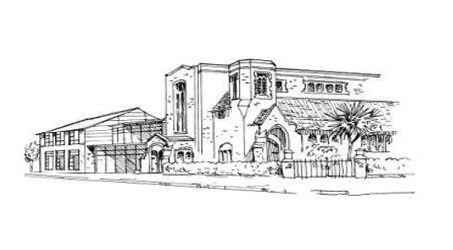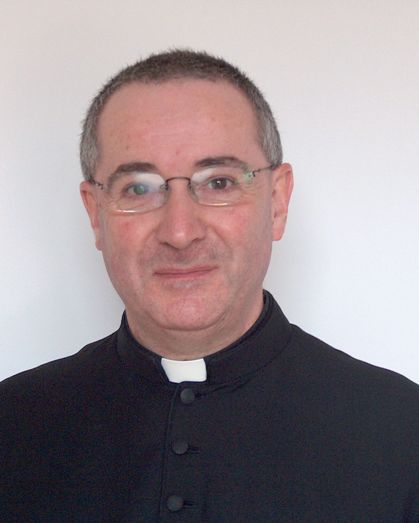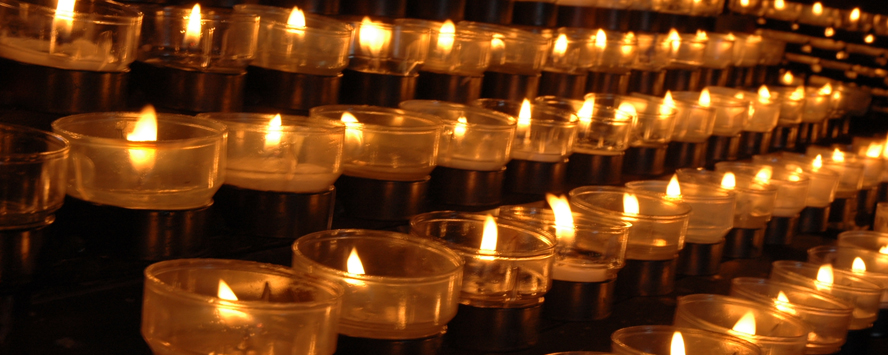
Weekly updated News and information from the Parish of Saint Joseph’s, New Malden
bulletin-25th-september-2016
Pentecost Sunday C

Weekly updated News and information from the Parish of Saint Joseph’s, New Malden
Bulletin 15th May 2016
Fr Peter's Farewell
The Ascension of the Lord C

Weekly updated News and information from the Parish of Saint Joseph’s, New Malden
Bulletin 8th May 2016
Deacon Philip Andrews
Some "behind the scene" views of the Vatican
En-route into the Vatican Studios of Vatican Radio, to conduct the English language commentary of the Papal Mass from the Basilica of St John Lateran today, the Thirsd Sunday in Advent, during which the Holy Father opened the Holy Door of that Basilica; our own transitional parish deacon, Phil Andrews, studying at the Venerable English College in Rome, took these early-morning views of his walk from the College to Vatican City. Many of these places are not open to the public for security reasons becasue of their proximity to the Apostolic Palace, and Secretariat of State.
St John Lateran is the preeminent Church of the Christian world, being the Pope’s own Cathedral as Bishop of Rome, containing as it does his Cathedra, or seat, which is the sign of his teaching authority. Inscribed on the great facade of this building, originally built by the Emperor Constantine in AD324, are the words: Sacrosancta Lateranensis ecclesia omnium urbis et orbis ecclesiarum mater et caput (which in England are rendered: “The Most Holy Lateran Church, of all the churches in the City and the world, the mother and head”. It was this celebration today which inaugurated the opening of the Holy Doors in Cathedrals around the world, including that of our own Cathedral Church of St George in Southwark.
Most of Deacon Phil’s current pastoral work in Rome is with Vatican Radio, part of which involves English language commentaries for Papal events, which are then carried by such media outlets as EWTN. Deacon Phil, and his colleague at the VEC, Deacon David Howell from St Raphael’s in Surbiton are due to be ordained to the Priesthood in Southwark Cathedral this coming 16 July, alongside Daniel Weatherly from Tunbridge Wells.

San Giovanni dei Fiorentini (This church, at the head of the via Giulia, has been designated the primary church for English-speaking pilgrims during the Jubilee of Mercy. During this year, Both Deacon Phil and Deacon David will officiate at Holy Hours and Devotions in Latin and English, for the English-speaking pilgrims in Rome. Holy Mass and the Sacrament of Reconciliation will also be available in English in this church. Note the humourous grafitti on the “No Entry” sign. The Romans invented grafitti over two thousand years ago. Without it, we may never have found St Peter’s tomb, which was identified by the presence of grafiti on a red wall enclosing his secret shrine!

Looking across towards the Castel Sant’Angelo (originally the Mausoleum of the Emperor Hadrian, c.AD134), the ancient Ponte Sant’Angelo (also constructed in AD134 for the Emperor Hadrian, and which is now surmounted by beautiful angels, carved during the Renaissance, some by Bernini), and in the foreground, the Ponte Vittorio Emanuelle II, built in the C19 following the unification of Italy under the Crown of the Savoyards.
Two views of St Peter’s Square, showing the Crib and Christmas Tree. Note the heightened security around Vatican City. In recent days, The Holy Father, the Vaticam, and Rome itself have been explicitly theatened by ISIS in a number of terrifying videos showing the city’s destruction. This, however, has deterred neither the Holy Father, nor the citizens of Rome, from carrying on with their lives, in spite of the increased security everywhere.
Porta Sant’Anna, the “Tradesman’s Entrance” to Vatican City, and used by all employees.
The Belvedere Courtyard, adjacent to the Apostolic Palace and Secretariat of State. Note the top of the cupola of St Peter’s just above what is in effect the liturgical south wall of the Sistine Chapel.
Three views of the First Loggia of the St Damasus Courtyard
Three views of the Sala Ducale
Two views of the Sala Regia, looking towards the Pauline Chapel, a private chapel of the Pope, which contains frescoes by Michelangelo, dating from 1541
Another view of the Sala Regia, looking away from the Pauline Chapel
A view of the door into the Sistine Chapel from the Sala Regia. It is this door which is ceremonially sealed when the Cardinals are in Conclave.
A fresco in the Sala Regia — the Return of Pope Gregory XI from Avignon (Giorgio Vasari, c.1572)
The Great Loggia of the facade of St Peter’s Basilica, looking liturgical north
The Great Loggia of the facade of St Peter’s Basilica, the window in the centre of the facade from which the Holy Father imparts his blessing to the City and the World: Urbi et Orbi
The Great Loggia of the facade of St Peter’s Basilica, looking into the basilica
The Great Loggia of the facade of St Peter’s Basilica, the throne
The modest sound booths, located behind the throne, and over the Arch of the Bells, of the facade of St Peter’s. It is from here that all commentaries are given in the various languages, regardless of where the Holy Father himself may be.
A view into St Peter’s Square from the Facade of St Peter’s (window beneath the Arch of the Bells)
Deacon Phil Andrews working hard during a Papal Mass commentary!
Santas waiting to undertake a charity bike ride in via della Conciliazione. Note the everyday sign directing tourists to the priceless frescoes by Raphael in the Villa Farnesina. Of course, the Stanze delle Segnatura within the Vatican are really the place to see Raphael at his best, notably, the “Disputation of the Holy Sacrament”, and the “School of Athens”.
A Musical Meditation on the Life of Christ
On 28th November, the Schola Cantorum of St Joseph’s Parish Church offered a musical meditation upon the life of our Lord.
Here are some selections from that evening’s inspiring repertoire.
Part I: Advent and Christmas
Puer natus est nobis – Words: Introit antiphon for Christmas Day (Isaiah 9:6; Psalm 98(97): 1); Music: Gregorian chant
Lullay my liking – Words: Anonymous (15th Century English); Music: Gustav Holst (1874-1934)
Part II: Jesus’ Public Ministry
Notre Père – Words: The Lord’s Prayer (Matthew 6: 9-13); Music: Maurice Duruflé (1902-1986)
The Beatitudes – Words: The Beatitudes (Matthew 5: 3-12); Music: Traditional Russian Chant
If ye love me – Words: John 14: 15-17; Music: Thomas Tallis (c.1505-1585)
Part III: Passion and Death
Hosanna filio David – Words: Antiphon for the procession on Palm Sunday; Music: Gregorian chant
Part IV: Resurrection and Ascension
Resurrexi – Words: Psalm 138: 18, 5, 6, 1, 2. Introit for Easter Sunday; Music: Gregorian chant
Quia vidisti me – Words: John 20: 29; Music: Matthew JC Ward (written in 2015 for the Schola of St Joseph’s Church, New Malden)
O rex gloriae – Words: Antiphon to the Magnificat for the Second Vespers of Ascension; Music: Luca Marenzio (1553-1599)
Part V: Pentecost
Factus est repente – Words: Communion for the Mass of Pentecost (Acts 2: 2,4;) Music: Gregorian chant
O sacrum convivium – Words: Antiphon to the Magnificat for the Second Vespers of Corpus Christi (based on 1 Corinthians 11: 26 and Romans 8: 18); Music: Giovanni Croce (1557-1609)
Sing we of the Blessed Mother – Words: G. B. Timms (1910-1997); Music: ‘Abbot’s Leigh’ by Cyril V. Taylor
Meditation Programme in PDF format
A Musical Meditation on the Life of Christ
This Saturday 28th November at 7.15pm, in St Joseph’s Catholic Church, New Malden, KT3 3QW.
Come and listen to St Joseph’s Schola as we follow the life of Christ through the great music of the Church’s Liturgy, including choral music from the Middle Ages to the 21st Century. This promises to be a wonderful hour of musical meditation in preparation for the Church New Year at Advent.
Entry is free, with a retiring charity collection.
Musical Meditation on the Life of Christ Poster
Prayer and Mass Intentions – November 2015
Prayer and Mass Intentions – April 2015

Prayer and Mass Intentions April 2015



























